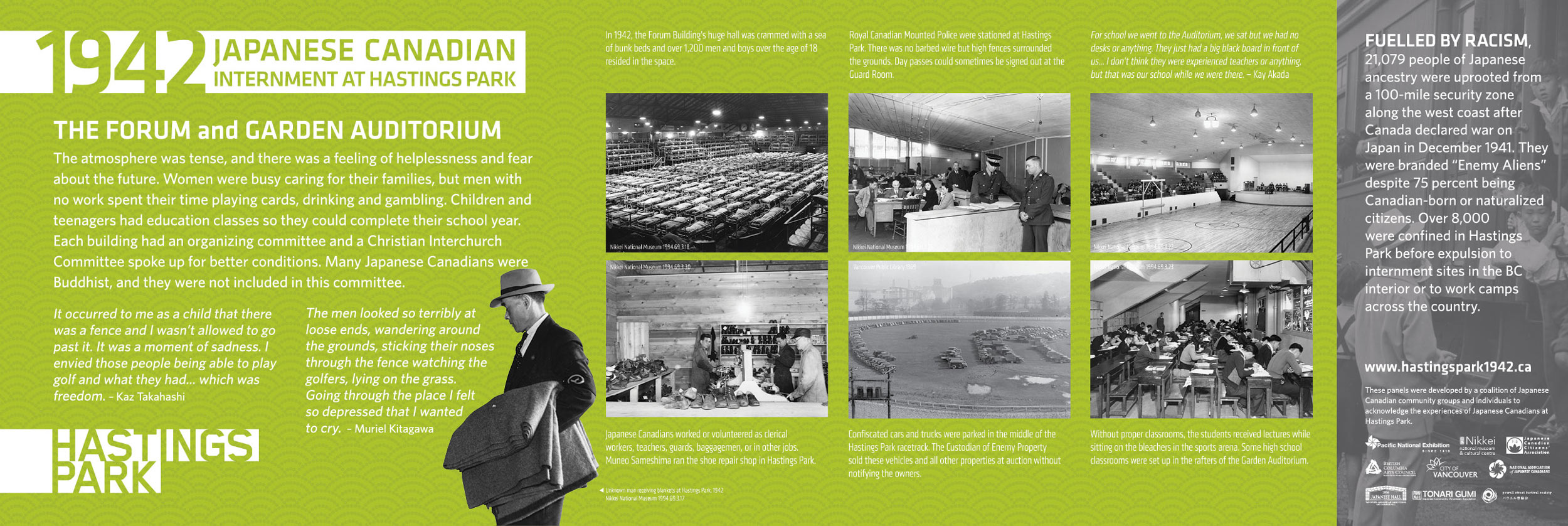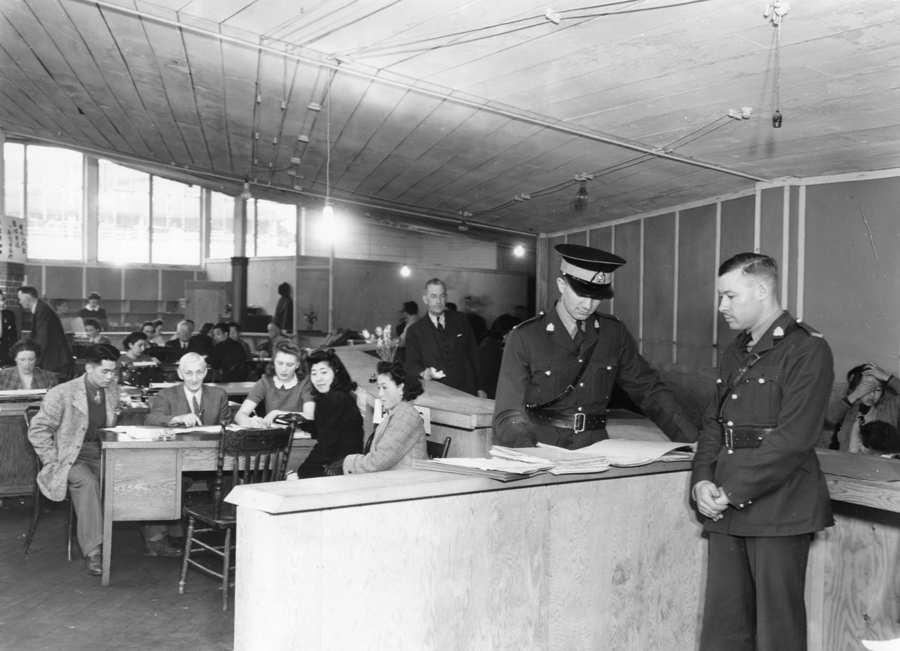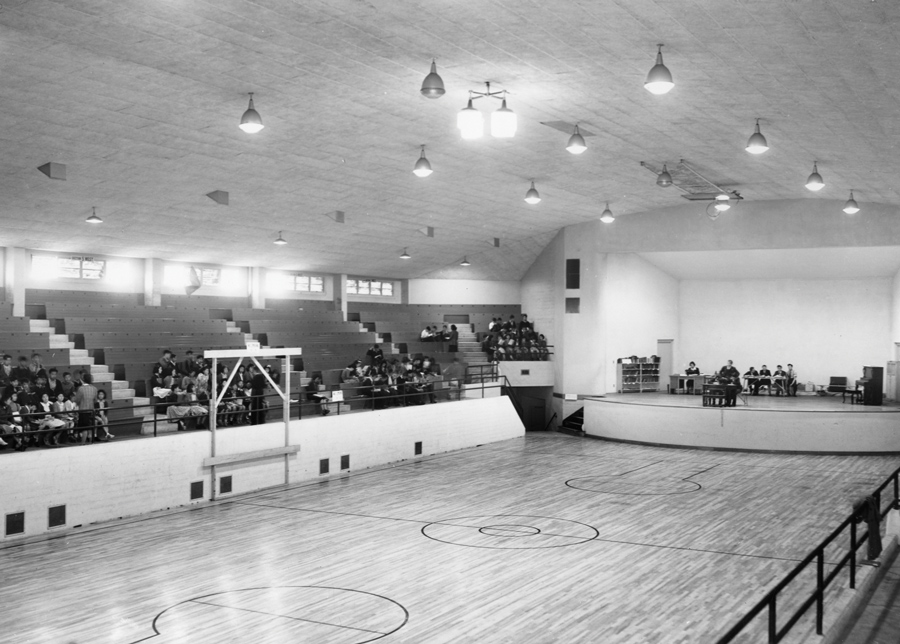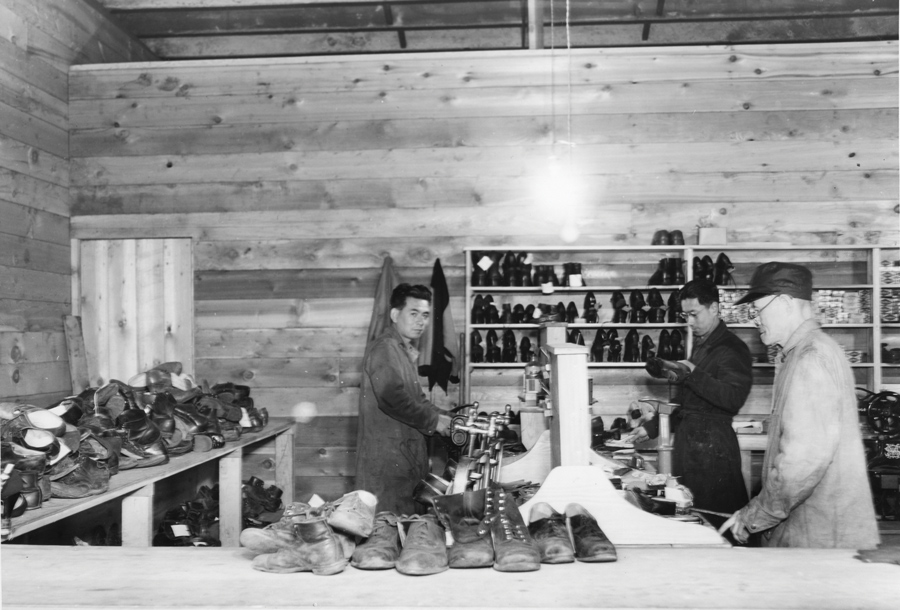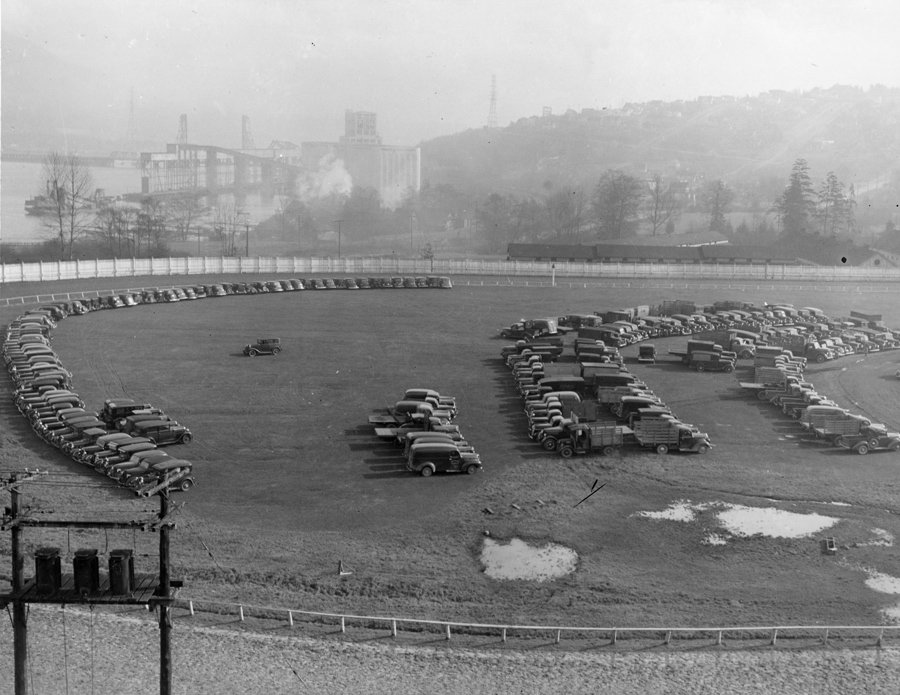The Forum and Garden Auditorium
The atmosphere was tense, and there was a feeling of helplessness and fear about the future. Women were busy caring for their families, but men with no work spent their time playing cards, drinking and gambling. Children and teenagers had education classes so they could complete their school year. Each building had an organizing committee and a Christian Interchurch Committee spoke up for better conditions. Many Japanese Canadians were Buddhist, and they were not included in this committee.
It occurred to me as a child that there was a fence and I wasn’t allowed to go past it. It was a moment of sadness. I envied those people being able to play golf and what they had... which was freedom. – Kaz Takahashi
The men looked so terribly at loose ends, wandering around the grounds, sticking their noses through the fence watching the golfers, lying on the grass. Going through the place I felt so depressed that I wanted to cry. – Muriel Kitagawa
In 1942, the Forum Building’s huge hall was crammed with a sea of bunk beds and over 1,200 men and boys over the age of 18 resided in the space.
Royal Canadian Mounted Police were stationed at Hastings Park. There was no barbed wire but high fences surrounded the grounds. Day passes could sometimes be signed out at the Guard Room.
For school we went to the Auditorium, we sat but we had no desks or anything. They just had a big black board in front of us... I don’t think they were experienced teachers or anything, but that was our school while we were there. – Kay Akada
Japanese Canadians worked or volunteered as clerical workers, teachers, guards, baggagemen, or in other jobs. Muneo Sameshima ran the shoe repair shop in Hastings Park.
Confiscated cars and trucks were parked in the middle of the Hastings Park racetrack. The Custodian of Enemy Property sold these vehicles and all other properties at auction without notifying the owners.

